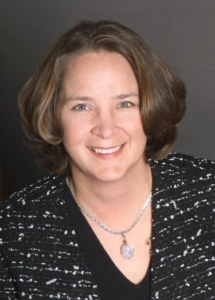 Suzanne Penavić, Director of Employee Engagement, SunGard encourages women to recognize the generosity of the network around them, and to actively reach out and make themselves available to it. “Networking played a big part in making my shift into diversity, inclusion, and engagement successful,” said Penavić. “That is one thing I wish I had realized earlier in my career.”
Suzanne Penavić, Director of Employee Engagement, SunGard encourages women to recognize the generosity of the network around them, and to actively reach out and make themselves available to it. “Networking played a big part in making my shift into diversity, inclusion, and engagement successful,” said Penavić. “That is one thing I wish I had realized earlier in my career.”
Penavić graduated from Cornell University in 1987 with a degree in Developmental Psychology. “From a career path perspective I think I followed a pretty nontraditional path,” said Penavić. This is because instead of choosing a career related to her college major, Penavić accepted a job at JP Morgan on Wall St. She said, “I caught the tail end of the Wall Street Eighties boom and I joined JP Morgan the summer before the crash.”
Career Path in Finance and Tech
Although Penavić’s time as a banker was short-lived, she was first introduced to technology, as it relates to financial services, when the entire FX back office at JP Morgan was being replaced.
“I was in charge of the Payment Investigations portion of the project,” explained Penavić, “and after that I ended up running the middle and back offices of the derivatives operations. It was the early nineties, and it was definitely the Wild West when it came to swaps and options, but it was booming. I found myself having to put these very complex synthetic instruments into an infrastructure that wasn’t designed for it.”
It was at this juncture that Penavić decided that banking wasn’t the best professional fit for her and made a swift career change when she accepted a job with a privately held software company called Microbank. Penavić recalled, “There was forty five people at the company, software was a fairly new concept at the time, and my parents thought I was crazy for leaving my job on Wall St.” She continued, “It was an opportunity I did not foresee, but it had a huge influence on my career path.”
“I essentially grew up with Microbank,” said Penavić, “As the company matured, we started a client services organization separate from development, built out proper professional services delivery capabilities, and then took it to the next level by implementing a product management and strategy function, which I was in charge of.”
Microbank was eventually acquired by Sungard, where Penavić now serves as the Director of Employee Engagement after working in several senior level product management roles in the Financial Services division. Currently, Penavić is really excited about the work she is doing to build out SunGard’s corporate social responsibility, community investment, and employee volunteerism policies and programs. “It is such a huge lever for engagement,” explained Penavić.









